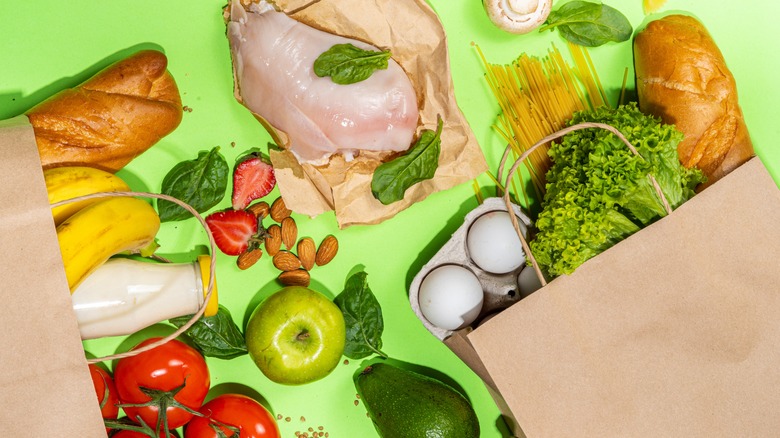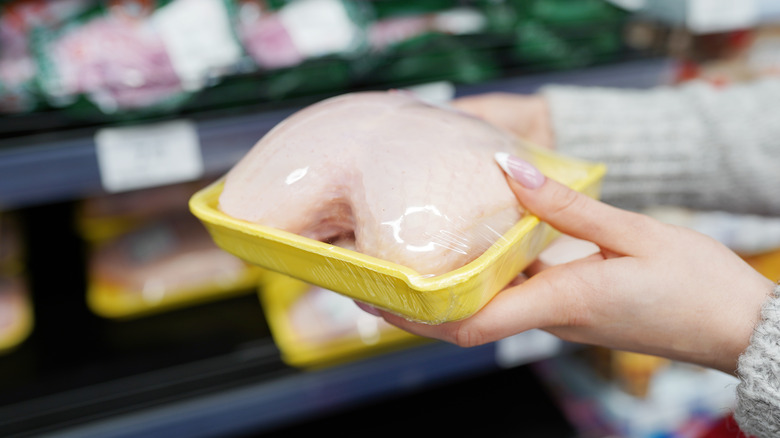Be Careful Not To Bag Chicken With Groceries That Have Sharp Edges
It's safe to say that chicken is a common item on countless grocery lists, but the journey of getting the chicken from the store to your dinner table can come with some hidden food safety risks. According to the CDC, around one million people get sick each year from consuming contaminated poultry. Fortunately, you only need to follow a few simple, safe practices to avoid adding to the statistics. One often-overlooked aspect is the potential danger of packing chicken in the same bag as groceries with sharp edges.
When you toss that plastic-wrapped chicken into your grocery bag, take a moment to see if there are any items with pointy corners in the bag. For example, if the pull tab on a Spam can is sticking out, it'll be a good idea to separate it from your chicken. The idea is to prevent any accidental tears or punctures in the chicken's packaging, which could expose the raw chicken to the outside environment and all its germs.
You also don't want chicken juices leaking out and spoiling other foods in your bag. Those drippings aren't harmless — they're loaded with germs like Campylobacter jejuni, which can make you seriously ill, according to the Applied and Environmental Microbiology journal. To be extra safe, wrap the chicken in a second plastic bag to protect it within your grocery bag. It might seem like a hassle, but it's a small price to pay to avoid the risk of food poisoning!
Other tricks to avoid contaminating your chicken during transportation and storage
You can protect yourself from right within the grocery store. While shopping, make a quick stop at the poultry aisle and grab raw chicken just before you head to checkout. This way, you won't leave the chicken out at room temperature for too long, where harmful bacteria can multiply inside the packaging.
When you place the chicken in your shopping bag, try to put it with cold or frozen items (check and make sure they don't have sharp corners before you do). These cold items will help keep the chicken cool and prevent bacteria from growing while you're on your way home. If you have a long trip from the store to your house, think about getting an insulated bag or, even better, keeping a cooler in your car with ice packs. This will keep the chicken and other perishable items nice and cool. As a general rule, the raw chicken should ideally not spend more than two hours at room temperature and should be best stored at 40 F or below, outside of the temperature threshold we call the "Danger Zone" where bacteria thrive.
Once you get home, put the chicken in the fridge immediately. Store it on the coldest shelves in the fridge (since cold air sinks, that would be the bottom-most shelf). This will not only keep the meat fresh for longer but also prevent any potential drips from the packaging from getting on other food!

